Concrete Batching Plant Parts Name

In the modern construction industry, concrete is undoubtedly one of the most basic and important materials. And concrete mixing plant, as the main facility for producing concrete, its efficient and stable operation is crucial to ensure the quality and progress of the project. A typical concrete mixing plant consists of several inter-operating systems, each of which contains a number of sophisticated components. Understanding the names and functions of these components is fundamental for investors, operators and maintenance personnel to ensure the proper functioning of the mixing plant.
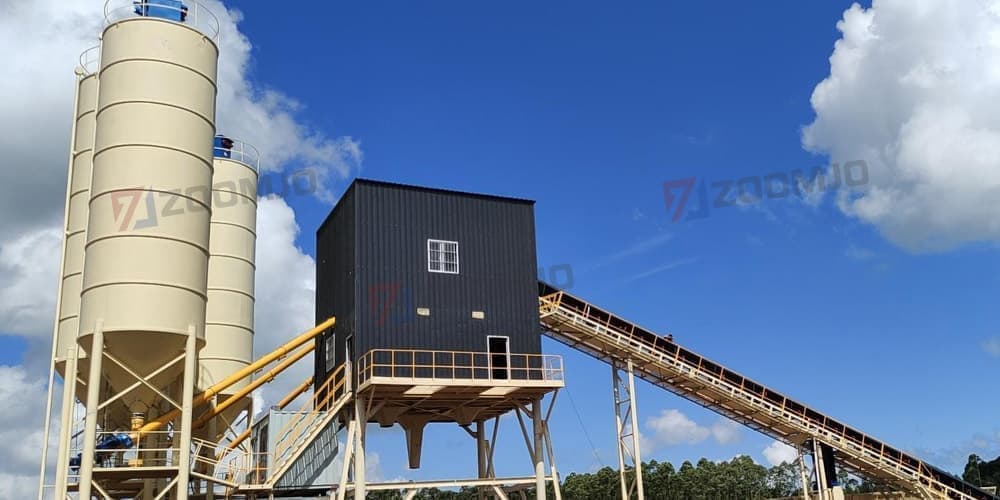
Major System Components
Depending on the type of concrete mixing plant, the composition of the equipment will vary. Typically, concrete mixing plants can be divided into the following major systems:
-
Material storage system
-
Material weighing system
-
Material conveying system
-
Mixing system
-
Control system
-
Pneumatic System
-
Dedusting Systems
These systems and their components are described in detail next.
Material storage system: the cornerstone of concrete production
The material storage system is the cornerstone of the concrete mixing plant and is responsible for storing all the raw materials needed in the production process. This system consists of an aggregate storage system, a powder storage system, a water storage system and an admixture storage system.
Aggregate Storage System
The aggregate storage system is part of the aggregate weighing machine and usually consists of several storage hoppers for different types of aggregates. Aggregates are loaded into the hoppers during the production process and wait to be weighed and transported to the mixer. Depending on the production capacity, the number of storage hoppers for aggregates is usually 2 to 4.
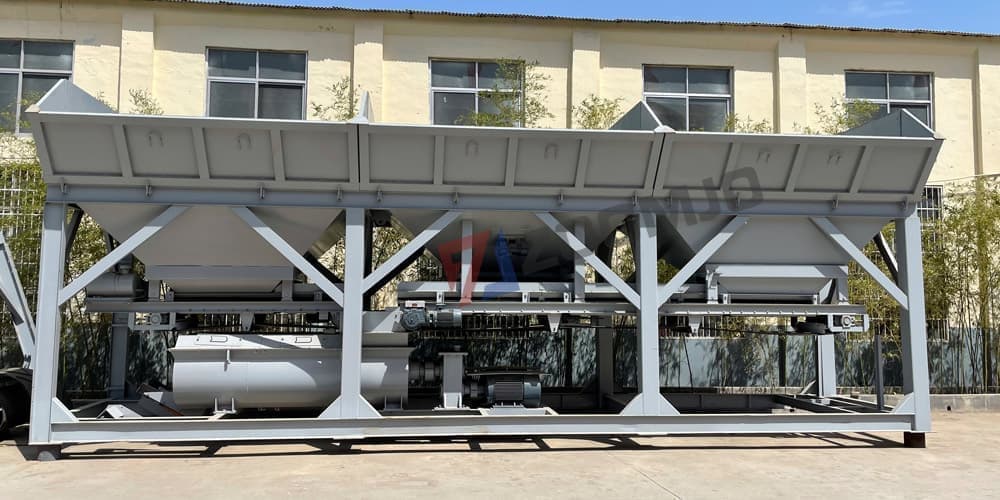
Powder storage systems
Powder storage systems are mainly used to store materials such as cement, mineral powders and fly ash. According to the shape and structure, cement tanks can be divided into the following types:
-
Horizontal cement tanks: installed on the ground, covering a large area and easy to move.
-
Vertical cement tank: cylindrical structure, small footprint, suitable for stationary mixing plant.
-
One-piece cement tank: non-detachable, suitable for small projects.
-
Assembled cement tank: can be assembled as needed, suitable for long-term storage.
Water and Admixture Storage
Water tanks are used to store the water required for concrete production and their capacity is usually customised according to production capacity. Admixture storage tanks are used to store a variety of admixtures to meet the needs of different concrete formulations.
| Model of Batching Machine | Number of Storage Bins | Capacity of Single Storage Bin (m³) | Productivity (m³/h) | Number of Aggregate Types | Ingredients Precision | Capacity of Weighing Hoppers (m³) |
|---|---|---|---|---|---|---|
| PLD800 | 2 | 3.2 | 48 | 2 | ±2% | 0.8 |
| PLD1200 | 2 | 7.3 | 60 | 2 | ±2% | 1.2 |
| PLD1600 | 2 | 6.3 | 80 | 2 | ±2% | 1.6 |
| PLD2400 | 2 | 10 | 120 | 2 | ±2% | 2.4 |
| PLD3200 | 4 | 15.6 | 160 | 4 | ±2% | 3.2 |
| PLD4800 | 4 | 25 | 280 | 4 | ±2% | 25 |
Accurate material weighing systems: the key to quality assurance
Accurate material weighing is key to ensuring the quality of concrete during the production process. Material weighing systems include aggregate weighing systems, powder weighing systems, water weighing systems and admixture weighing systems. These systems ensure accurate proportioning of each material through key components such as weighing funnels, load cells and pneumatic valves.
-
Weighing funnels: are used to centralise the measurement of each type of material.
-
Load cell: ensures weighing accuracy and is a key component in the entire weighing process.
-
Pneumatic valves: control the inflow and outflow of material.
Aggregate weighing systems can be either cumulative weighing systems or individual weighing systems, both of which are located underneath the aggregate weigh box. The main component of the powder weighing system is the powder weighing funnel, which is used for the temporary storage of the powdered material waiting to be weighed. The water and admixture weighing funnels are located directly above the mixing plant and are used for accurate weighing of water and admixtures.
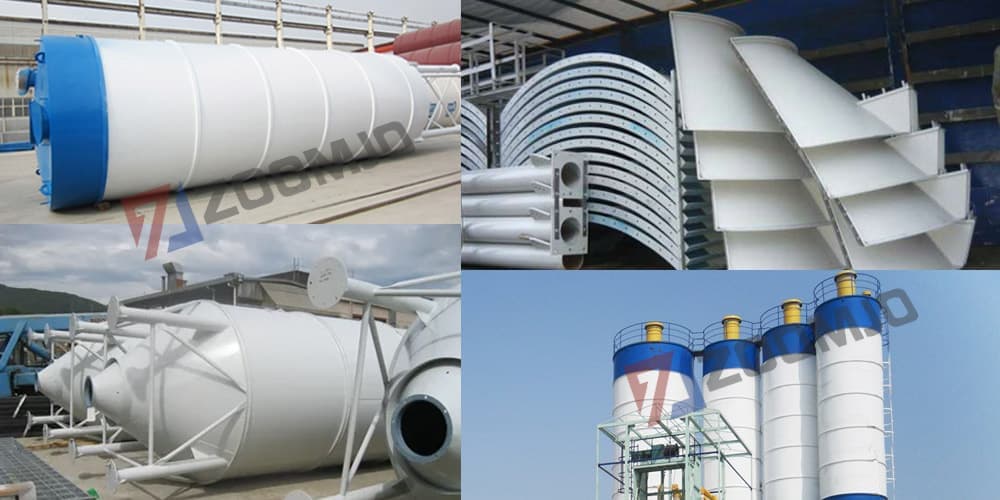
Efficient material handling system: the link between the various stages
The material conveying system is the link between storage, weighing and mixing. It consists of an aggregate conveying system, a powder conveying system, a water conveying system and an admixture conveying system.
-
Aggregate conveying system: belt conveyor or bucket elevator is usually used, and suitable equipment is selected according to the project scale.
-
Powder conveying system: mainly through the screw conveyor for horizontal or vertical conveying.
-
Water conveying system: water is transported from the water tank to the weighing hopper by pump.
-
Admixture conveying system: similar to water conveying, the admixture will be conveyed to the corresponding position by pump.
The design and selection of these conveying systems directly affect the productivity and stability of the mixing plant.
Mixing system: the heart of concrete production
Mixing system is the core of concrete mixing plant, and its main equipment is mixer. According to the structural form, the mixer can be divided into forced mixer and continuous drum mixer. Among them, forced mixers are widely used because of their superior performance. Common models include twin-shaft horizontal mixers and vertical-shaft planetary mixers, each with its own characteristics and suitable for different types of concrete production.
Twin Shaft Horizontal Mixers
The twin-shaft horizontal mixer has a compact structure and efficient mixing performance. It is capable of handling dry, semi-dry and lightweight aggregate concrete and has an output capacity ranging from 350 to 9,000 litres. Its design allows for better internal circulation of large aggregates, resulting in improved mixing results.
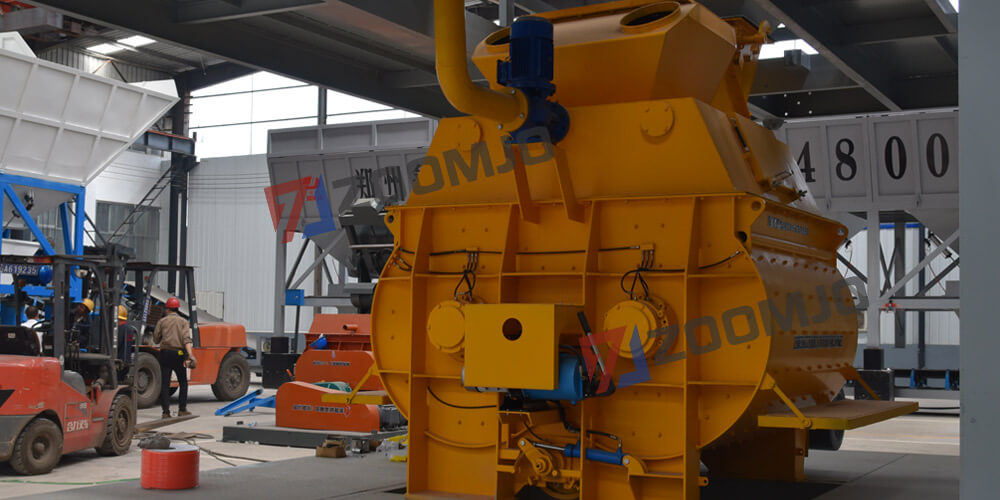
| Model | JS500 | JS750 | JS1000 | JS1500 | JS2000 | JS3000 |
|---|---|---|---|---|---|---|
| Discharging capacity | 500L | 750L | 1000L | 1500L | 2000L | 3000L |
| Feeding capacity | 800L | 1200L | 1600L | 2400L | 3200L | 4800L |
| Mixing time | 72s | 72s | 60s | 60s | 60s | 60s |
| Discharge height | 3800mm | 3800mm | 4100mm | 4100mm | 4100mm | 4100mm |
| Quantity of blade (unit) | 2X7 | 2X7 | 2X8 | 2X10 | 2X9 | 2X10 |
Vertical Shaft Planetary Mixers
The Vertical Shaft Planetary Mixer uses a complex trajectory for more homogeneous mixing. It is especially suitable for high standard projects such as high speed railway prefabricated components and civil engineering construction sites.
Control system: the brain of the mixing plant
The control system is the brain of the concrete mixing plant, which is responsible for coordinating and managing the whole production process. This system usually includes a computer (upper computer), programmable logic controller PLC (lower computer), batching instrument, electric power device and so on. With the development of technology, the control system is also evolving, from distributed microcomputer control system to centralised dual microcomputer control system, their degree of automation and accuracy are constantly improving.
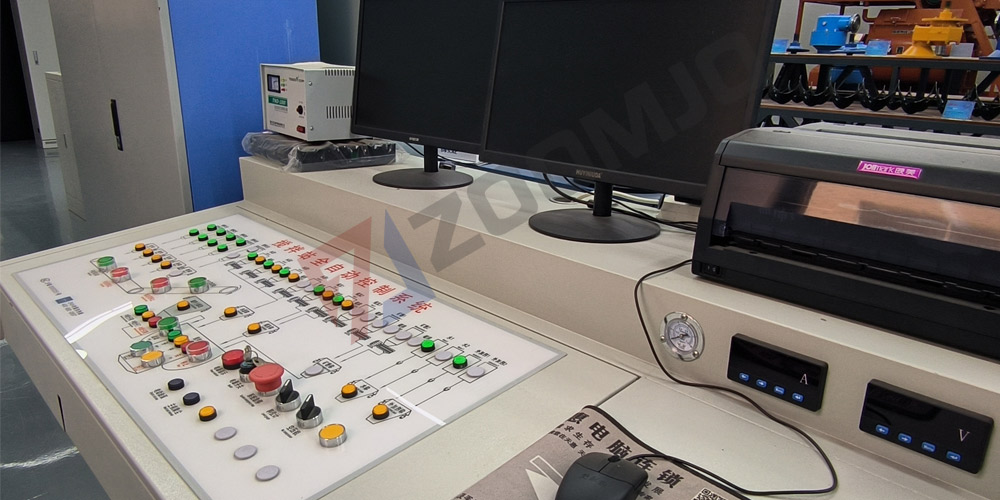
-
Distributed microcomputer control system: independent control by programmable logic controller PLC.
-
Centralised microcomputer control system: Integration of multiple control electrical boxes, managed by a single computer.
-
Centralised dual microcomputer control system: full production control and management by means of dual computers.
Pneumatic system and dust removal system: ensure safety and environmental protection
Pneumatic system and dust removal system are important components to ensure the safety and environmental protection of the mixing plant. The pneumatic system is responsible for controlling the conveying and distribution of materials through air compressors, cylinders, solenoid valves and other components. The dust removal system, on the other hand, reduces dust emissions through dust collectors and dust removal pipes to protect the environment and workers' health.
Conclusions
In summary, a concrete mixing plant consists of several fully functional components, each of which has its own unique importance in the entire production process. Understanding these components and their functions not only helps to improve production efficiency, but also ensures product quality. If you have more questions or needs about concrete mixing plant, please feel free to contact us for more information.

 English
English  Español
Español  简体中文
简体中文  Pусский
Pусский  українська
українська 
